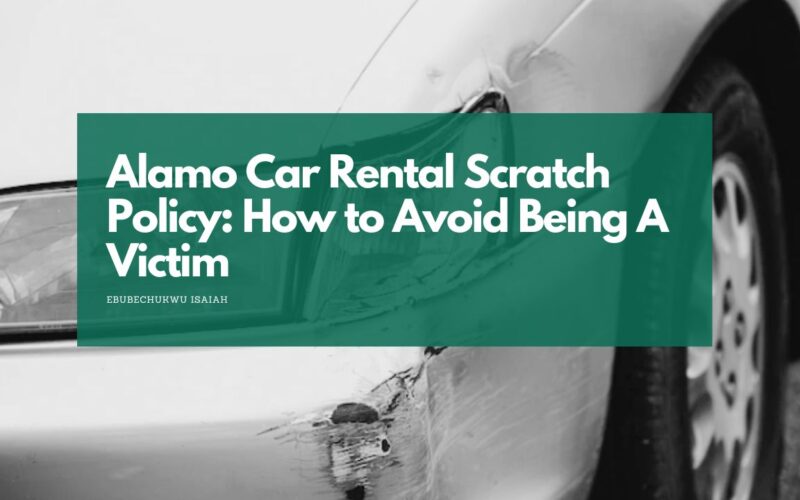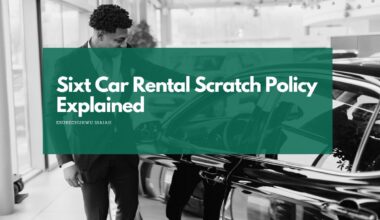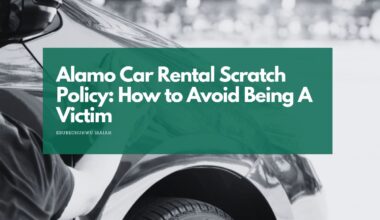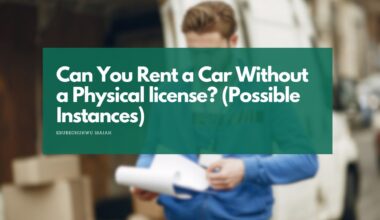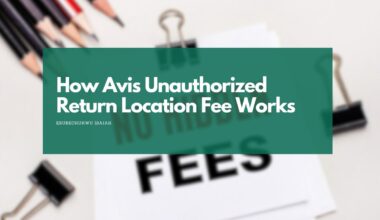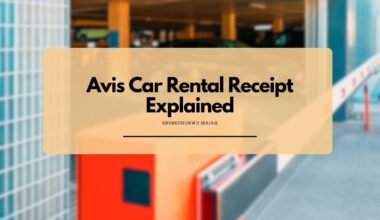As an Amazon Associate, I earn a small commission from qualifying purchases. Learn more about this.
We’ve all heard the horror stories—someone rents a car, has a great trip, and then returns it only to be hit with exorbitant fees for minor scratches or dings they didn’t cause.
For instance…
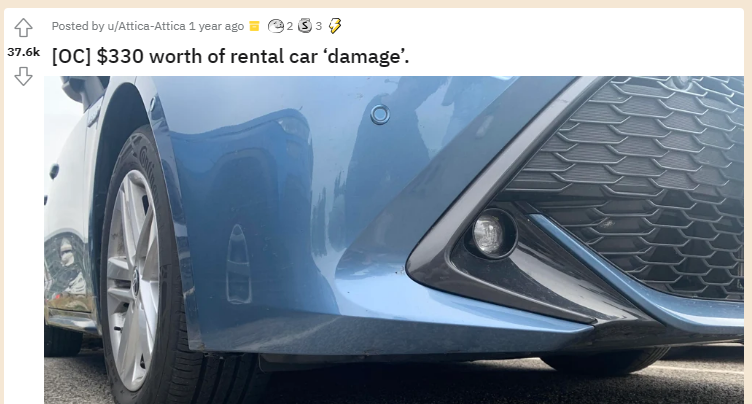
We’ve seen it several times and It’s definitely a situation nobody wants to find themselves in.
This article aims to be your comprehensive guide to understanding Alamo Car Rental’s scratch policy and how you can protect yourself from becoming a victim.
Understanding Alamo Car Rental Scratch Policy
Renting a car for a trip or even just a day out is a convenient way to get around, but it does come with its set of responsibilities.
One such responsibility is understanding and adhering to the car rental’s scratch policy.
For those of you opting for Alamo, it’s essential to familiarize yourself with their specific guidelines on this matter.
First and foremost, let’s clarify what counts as a “scratch” in the context of a rental car.
A scratch is generally considered a superficial damage to the car’s paint or body that didn’t puncture or dent the vehicle.
While that might sound like a minor issue, overlooking such details can sometimes lead to unpleasant financial surprises at the end of your rental period.
Now, how does Alamo handle scratches?
When you rent a car from Alamo, the vehicle is inspected prior to you taking possession. Any pre-existing scratches, dents, or other forms of damage are documented. You’re usually given a vehicle condition report that you should read carefully. This is your baseline.
If new scratches appear while the car is in your possession, you could be held responsible for them.
However, not all scratches warrant charges. Some scratches can be overlooked and others could also be categorized as damage which does require money, of course.
So how can you tell if a scratch is considered damage or not? What’s the difference?
Alamo does this by following the standard in their damage evaluator tool:
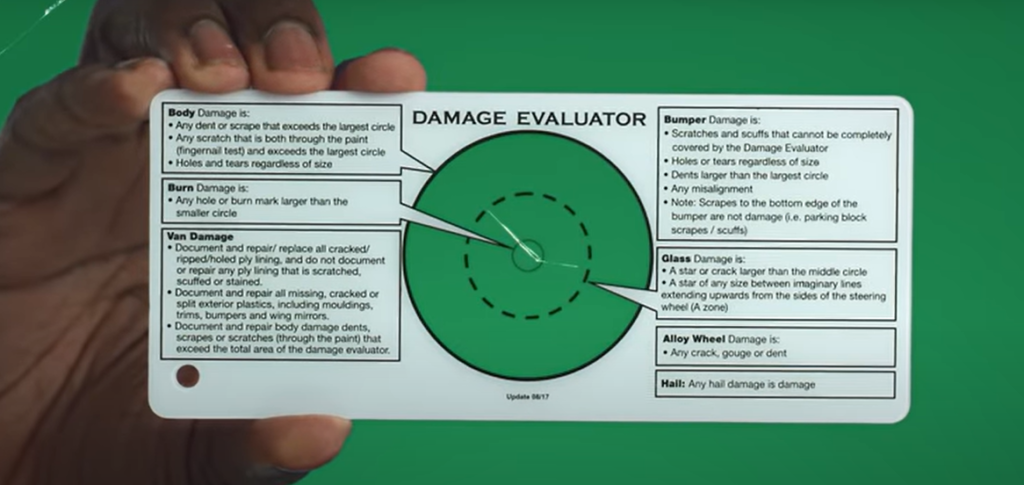
This is also used across Alamo subsidiary companies including; Enterprise, and National.
Let’s take a quick overview of this damage evaluator tool in detail:
Body Damage
- Dents or Scrapes: Any dent or scrape that can’t be entirely covered by the largest circle in the Damage Evaluator tool is considered damage.
- Scratches: A scratch is considered damage if it is through the paint (you can confirm this with the fingernail test) and is larger than the largest circle in the Damage Evaluator.
- Holes and Tears: These are always considered damage, regardless of size.
Burn Damage
- Burns holes or marks are considered damage if they are larger than the smaller circle on the Damage Evaluator tool.
Van-Specific Damage
- Ply Lining: Document and repair or replace any cracked, ripped, or holed ply lining. However, ply lining that is merely scratched, scuffed, or stained does not need to be documented or repaired.
- Exterior Plastics: Missing, cracked, or split exterior plastics should be documented and repaired.
- Body Damage: Dents, scrapes, or scratches that exceed the total area of the damage evaluator need to be documented and repaired.
Bumper Damage
- Scratches and Scuffs: These are considered damage if they cannot be completely covered by the Damage Evaluator tool.
- Holes or Tears: Always considered damage, regardless of size.
- Dents: Only considered damage if larger than the largest circle on the Damage Evaluator tool.
- Misalignment: Any misalignment is considered damage.
Note: Scrapes on the bottom edge of the bumper (such as from parking blocks) are not considered damage.
Glass Damage
- A star or crack larger than the middle circle on the Damage Evaluator is considered damage.
- A star of any size in the “A zone” (an imaginary area extending upwards from the sides of the steering wheel) is also considered damage.
Alloy Wheel Damage
- Any crack, gouge, or dent in the alloy wheel is considered damage.
Hail Damage
- Any hail damage is considered damage, irrespective of size.
Generally, whenever a scratch is considered damage, you’re charged duly. If it’s not considered damage, it likely falls under the fair tear and wear policy of the company which doesn’t require a charge from you.
What’s the cost for Rental Car Damage at Alamo?
Assessment Process:
Before we dive into numbers, it’s essential to understand that Alamo, like most car rental agencies, employs a thorough assessment process.
This isn’t a random figure they pull out of thin air. They’ll consider the severity, location, and type of damage using their Damage Evaluator tool, which we discussed earlier.
Minor vs. Major Damage:
Typically, costs can vary based on whether the damage is categorized as minor or major. Minor damages, like small scratches or dents that don’t exceed the Damage Evaluator’s criteria, might incur a lesser fee.
On the other hand, significant damages—deep scratches that cut through the paint, large dents, or damages to vital components—will undoubtedly come with a steeper price tag.
Labor and Parts:
The total cost often encompasses both the price of parts needed for the repair and the labor involved.
Depending on the car model and the affected area, the price of parts can fluctuate.
For example, replacing a side mirror or bumper on a luxury car will likely be more expensive than on a standard economy car.
Administrative and Loss of Use Fees:
Beyond the direct repair costs, Alamo might charge additional administrative fees for processing the damage claim.
There’s also the ‘Loss of Use’ fee. This is charged because while the car is being repaired, it can’t be rented out, leading to a loss for the company.
Insurance and Protection Packages:
If you’ve opted for Alamo’s protection packages or have rental car coverage through your insurance provider, these costs might be significantly reduced or covered entirely.
It’s always advisable to check the terms of these protection plans and understand your potential liabilities.
How to Avoid Being A Victim of the Alamo Car Rental Scratch Policy
Step 1: Document Everything at Pickup
The moment you get the keys to your rental car, the first thing you should do is document its condition. This is not the time to rush. Walk around the car and carefully note any existing damage.
Use your phone to take photos from multiple angles. Make sure the rental agent also notes these damages on your rental agreement. This serves as your primary line of defense should any dispute arise later.
Step 2: Understand the Damage Evaluator Tool
As we discussed in the previous section, Alamo uses a specific Damage Evaluator tool to assess vehicle damage.
Knowing what is considered damage by their standards can go a long way in protecting you from unexpected fees.
It’s worth asking the rental agent to explain how they use the tool or, at the very least, take a few minutes to review the criteria yourself.
Step 3: Drive Mindfully
While this might seem obvious, the best way to avoid damage charges is not to incur any damage in the first place.
Avoid tight parking spots, be cautious when driving through narrow streets, and generally try to drive in a manner that minimizes the risk of scratching or denting the car.
Step 4: Perform a Return Inspection
Before handing the keys back, conduct your own thorough inspection of the car—just as you did when you picked it up. If possible, have the same agent who assisted you during the pickup do the return evaluation.
Take pictures again for your own records, and ensure any new damages (if any) are accurately documented.
Step 5: Ask for a Receipt
When you return the car and settle the final bill, ask for a detailed receipt that includes the condition of the car upon return.
This can be invaluable if you need to dispute a charge later on.
Conclusion
You don’t have to be a legal expert to navigate the car rental process without being hit by unexpected fees.
By documenting the vehicle carefully at both pickup and return, understanding Alamo’s Damage Evaluator tool, and asking for a detailed receipt, you’re taking significant steps to protect yourself.
